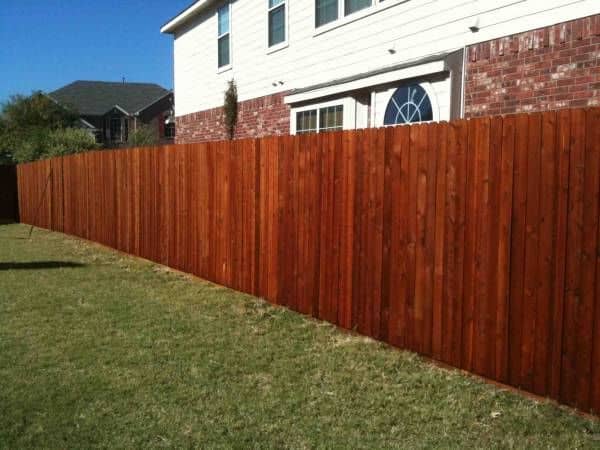Reliable Deck Cleaning Near Me: Restore Your Deck's Charm
Wiki Article
Vital Tips for Deck Discoloration Success
Attaining a perfectly stained deck calls for more than just a brush and a can of tarnish. From picking the best type of discolor to grasping the art of application, each phase plays an important duty in the last result.Picking the Right Spot
Choosing the suitable discolor is vital in achieving a long lasting and visually pleasing coating for your deck. deck staining near me. When selecting a tarnish for your deck, it is necessary to take into consideration elements such as the timber kind, preferred shade, level of protection required, and maintenance preferences
To start with, think about the kind of wood your deck is made from, as various wood varieties might respond differently to certain types of stains. Hardwoods like oak or mahogany may require different discolorations compared to softwoods like ache or cedar. Comprehending the characteristics of the wood will aid you select a discolor that penetrates successfully and boosts its all-natural elegance.
Following, consider the color you desire for your deck. Stains are available in a selection of colors, from natural tones that improve the wood's grain to more nontransparent colors that offer far better UV security. Select a color that enhances your outside room and matches your visual preferences.
In addition, examine the degree of defense the stain deals. Some spots supply much more extensive protection against UV rays, dampness, and mildew, which can extend the life of your deck. Stabilizing security with aesthetics is vital to accomplishing a aesthetically appealing and durable coating.
Preparing the Deck Surface
To make sure a successful application of the picked discolor, detailed preparation of the deck surface is essential. Begin by cleaning the deck extensively to remove dirt, debris, and any kind of previous finishes. Utilize a deck cleaner or timber brightener together with a stiff-bristled brush to scrub the surface tidy. Pay attention to areas vulnerable to mold and mildew and mildew growth. After cleaning, enable the deck to dry completely before continuing.Change or repair these as required to ensure the structural honesty of the deck. This action not only helps the tarnish stick much better yet likewise improves the overall look of the deck.
Using the Spot Appropriately

Begin by official source completely blending the tarnish to ensure an also consistency. Utilize a paint stirrer to blend the discolor well, especially if it has been resting for a while. When applying the discolor, use a paintbrush, sprayer, or roller , depending on the learn the facts here now kind of discolor and the size of the deck. Operate in workable sections to avoid the stain from drying out unevenly. Apply the tarnish in the direction of the timber grain to make sure also protection and an expert coating.
Allow the first layer to dry totally prior to deciding if a second layer is needed. Comply with the manufacturer's guidelines relating to drying times and reapplication. Appropriate application of the discolor is crucial for securing your deck and boosting its look for many years to find.
Keeping Your Tainted Deck
After effectively using the tarnish to your deck, preserving its look and safety high qualities is critical for lasting toughness and aesthetic charm. Normal upkeep is essential to protecting the charm and honesty of your discolored deck. Resolving issues quickly can avoid them from aggravating and prolong the life of your discolored deck.

Troubleshooting Common Issues
Recognizing and resolving usual problems that may develop with your tarnished deck is essential for ensuring its longevity and optimal efficiency. One common trouble is peeling off or flaking of the discolor. This can occur because of inadequate attachment brought on by inadequate surface area preparation or using the stain in undesirable weather problems. To remedy this, the impacted areas require to be stripped, fined sand, and appropriately re-stained adhering to manufacturer guidelines.An additional concern usually come across is mold and mildew and mold development on the deck surface area. This can be credited to moisture retention, absence of sunshine, or improper vinyl fence materials ventilation. To tackle this issue, a detailed cleansing with a mold and mildew remover complied with by correct drying and application of a mold-resistant discolor is vital.
In addition, fading of the stain color with time is a widespread concern. UV direct exposure and severe climate can create staining. To resolve this, picking a premium, UV-resistant tarnish and applying a fresh coat periodically can help keep the deck's aesthetic appeal.

Verdict
In final thought, successful deck discoloration calls for selecting the right discolor, properly preparing the deck surface, applying the tarnish appropriately, and preserving the stained deck. By adhering to these vital tips, you can accomplish a beautifully stained deck that boosts the general look of your exterior space. Keep in mind to troubleshoot any type of typical issues that may develop throughout the discoloration process to ensure a visually enticing and durable result.Achieving a faultlessly discolored deck needs even more than just a brush and a can of discolor.To guarantee an effective application of the picked tarnish, thorough preparation of the deck surface is essential. When applying the discolor, use a roller, paintbrush, or sprayer , depending on the type of discolor and the size of the deck.Recognizing and attending to common concerns that might occur with your tarnished deck is important for guaranteeing its longevity and optimum performance.In conclusion, successful deck staining calls for selecting the right stain, correctly preparing the deck surface area, using the tarnish correctly, and preserving the tarnished deck.
Report this wiki page